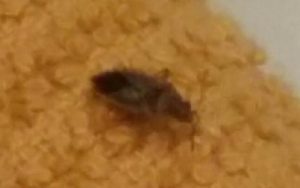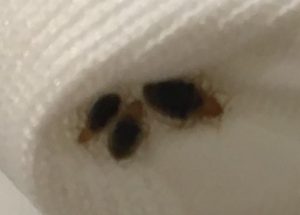Waking up to bites? Identifying Common Insect Bites
Look for a small, itchy, red mound. This is the most common visible symptom of an insect bite, and depending on other symptoms could be from a variety of insects.
A single bite mark is probably from a mosquito or fly. You may notice a tiny bite mark in the center of the mound of a mosquito bite.
Flea bites are a number of small, itchy mounds grouped together. You will probably find them in areas where your clothes fit tightly to your body, such as around your waist.
Bedbug bites will be itchy red bumps, maybe with a blister, grouped in rows of two or three.
People often wake up to find small bug bites all over their bodies. These pest bites can be itchy and annoying and can sometimes cause a rash. There are a variety of bugs that can bite people while they are sleeping, including mosquitoes, bed bugs, and fleas. Bed bugs are small night creatures that live in enclosed spaces and usually like to hide in beds, sheets, furniture, and dark places. A massive infestation can occur if not managed. It’s a good idea to conduct frequent inspections for signs of bed bugs. Every time you come back from traveling, you should look carefully at your belongings because bed bugs can sneak into your house without you even noticing.
There are a couple of ways to eliminate these undesirable insects: You can try doing it yourself by using a bed bug spray to tackle a small infestation, or you can take the recommended approach and hire a professional bed bug exterminator. If you suspect you have a bed bug problem.
Bed bugs Extermination professional technicians are trained to remove and treat any bed bug infestation around your home or business. They create a personalized treatment plan to eliminate any bed bugs present on your property. On the day of the service, their team of exterminators will perform a detailed inspection around your property and treat the area with nontoxic solutions to kill all bed bugs and their eggs.
Bed bug treatments are backed by a 30-day guarantee, meaning if you find a bed bug within those 30 days, the company will dispatch technicians for another treatment at no cost.
Beg bug infestations have become a common problem. Although often previously associated with overcrowding and dilapidated housing environments, Bed bugs have returned and can be found in the cleanest living accommodations including fine hotels and large apartment buildings.
The reasons they have returned is not fully understood, but is believed to be partially due to an increase in travel among people, which includes easy movement of luggage or other items that may have become infested.
Due to changes in regulations, pesticides that previously were used to control these offending insects are no longer being used, which may also be a contributing factor to their resurgence.
Bed bugs are one of the most difficult pest problems to eradicate quickly. By far, the best solution for bed bugs is to hire a pest control service company with experience successfully controlling bed bugs. Unfortunately, this can be expensive beyond the means of many people. Not being able to afford to hire a professional, to attempt do-it-yourself bed bug control, there are some guide to follow. With diligence patience some hard work, there is a fighting chance of getting rid of bed bugs.
In buildings, apartments or condominiums, it’s best to alert the property manager. A coordinated bed bug control effort using a pest control company is generally needed in such situations. Bed bugs readily move from apartment to apartment, with many people unaware that they have a problem. If one apartment is infested, adjoining units should be assumed to be infested unless shown otherwise through inspection . Simply asking tenants whether they have bed bugs is not enough. In one recent study only half of residents in a large apartment with bed bugs knew or admitted to bed bug problem.
Pesticides alone are not the answer to bed bugs. Most of the commonly used pesticides today, including professional products consumer products advertised for control of bed bugs, are at best moderately effective at controlling these pests. Pesticides must be used with care for safety with attention to proper application to work well. Aerosol “bug bombs” or “fumigators” are also mostly ineffective in eliminating bed bugs. Aerosol insecticides mainly kill insects that are exposed, out of their hiding places, not those hidden behind baseboards, in cracks crevices of the bed, under carpet edging in walls.
Steps for preparation to bed bug extermination control removal service
Bedrooms are the principal locations for bed bugs; however, any room where people sleep or rest in the home may provide harbor age for bed bugs. Living rooms with sofas sofa beds are the next most common sites for bed bugs. Typically an infestation starts in one room spreads slowly to other places where people sleep. Finding treat for bed bugs the easier it will be to get rid of them. Wait too long bed bugs may be found throughout the home or business office building



